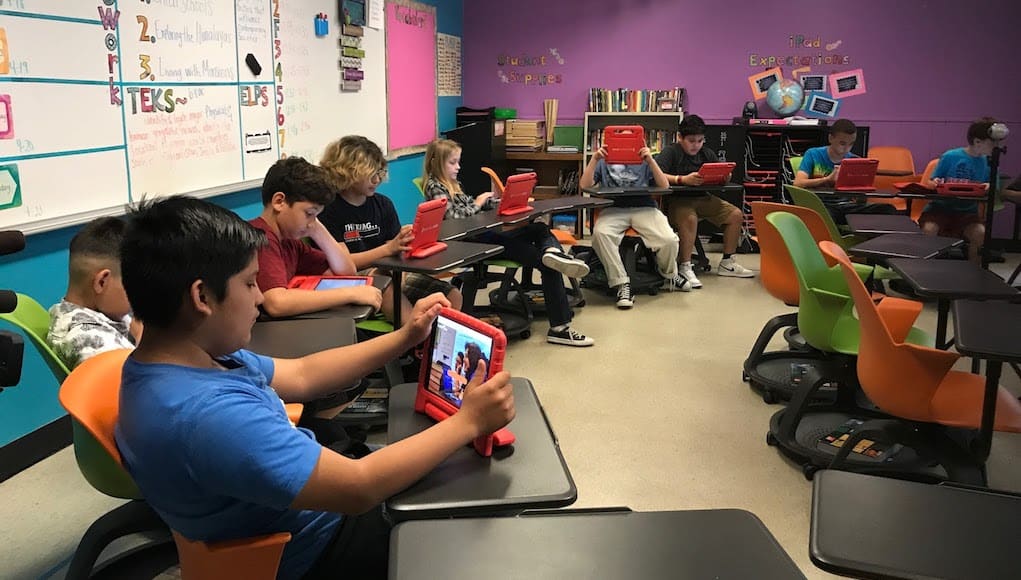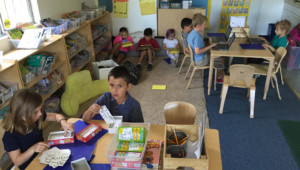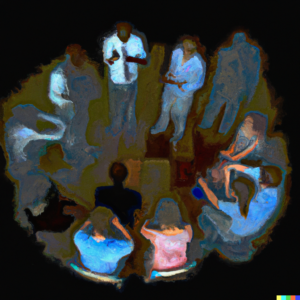A Conversation About Creating A Global Classroom

By Jessica Altounian and Holly Pazos
Holly’s students have participated in several PenPal Schools VR projects, including a VR Field Trip to Pakistan. PenPal Schools recently spoke with Holly about her experience implementing global collaboration projects and virtual reality in her classroom.
PenPal Schools helps teachers to connect their students to learn with PenPals around the world. Why is this kind of global education important to you?
Global education is important to me because I believe that my job as an educator is to help students develop an awareness of cultural diversity. Teaching students global empathy and seeing different perspectives for other cultures is the best part of my job as a teacher.
You’ve used PenPal Schools projects in the past to help your students connect with a global audience. How was using virtual reality through our VR Field Trip to Pakistan different?
We hadn’t really done virtual reality before this project. We always talked about being global and I thought, “Oh I’ll just show them a video,” but VR is so much more than a video. We had done Google Earth and some Google Expeditions, but nothing like what PenPal Schools had, where you were actually experiencing going through Pakistan. We even had the chance to connect with PenPals from Pakistan!
My students want to do more of it. We found other VR YouTube videos and we use cardboard headsets and iPads. Over the summer, I’m doing some professional development around virtual reality so we can do more. My students want to make their own videos, too, so I’ll start learning more about how to do that using Samsung 360 cameras.

What did your students learn through the VR Field Trip to Pakistan that they otherwise might not have had the opportunity to learn?
The things that I heard that were their biggest ah-ha moments were “Oh, Pakistan is nicer than I thought it was.” They realized that there’s more in Pakistan than what they thought. There was stuff that was beyond what they see in the media, like wars and bad stuff. My students got to virtually go into someone’s house and see that it looks like our homes here. They were so impressed by the library. We had a lot of fun conversations about the media and what they want you to see and think.
How much class time do you dedicate to VR Field Trip to Pakistan and other PenPal Schools projects?
We spend one day a week on PenPal Schools. We go through the video several times together. Sometimes, we’d continue the lesson for a second or third day. My students do further research and will find videos, articles, and pictures based on their interests. The video they really liked from VR Field Trip to Pakistan was the border closing ceremony, so we did further research about that.
When I got the progress report emails from PenPal Schools, I was surprised to see more messages than I had looked at in class or graded. So, I started asking how many students got online at home and in every class more than half of my students raised their hand. They’re going online at home to see if their PenPals have written to them and continue their conversations.
From your experience, what are some best practices for implementing a PenPal Schools project like VR Field Trip to Pakistan? What advice do you have for teachers and administrators who are interested in PenPal Schools?
At first, I wasn’t previewing any of the lessons with the students. I wasn’t giving them any knowledge beforehand. I just figured they knew enough to do it. I noticed that their responses were short and very basic, so we started talking about the topics the day before. They’d then have enough knowledge to talk to their parents or to each other. I’ve found that front loading really helped.
With virtual reality specifically, we mainly use iPads and some cardboard headsets for our students to view VR videos. We don’t have headphones for the whole class, so I play the video on the big screen with our class speakers while the kids push play on their own devices and follow along. My students talked more after the VR videos than the other videos, because what one person saw, somebody else missed. This is why it’s helpful to watch the videos more than once, so they can go back and look for things they may have missed.

Any other thoughts or words of wisdom you’d like to share with interested educators and school leaders?
Don’t be scared of what your kids are going to say or think. My kids didn’t let me down. They have ideas and the desire to learn, they just need a safe space to do it. PenPal Schools is safe. They’re not talking to weird people online, they have structured lessons and guided questions. As we progressed more through the year, my students became more willing to share with their PenPals. At the beginning of the year we had canned experiences, like “My school has a flag outside of it.” But by the end of the year they became more confident sharing stories about themselves and their lives.
For more on global ed, see:
- Shifting Paradigms to Respond to the Demands of a Global World
- Hot Topics from the Harvard Think Tank on Global Education
- Getting Smart Podcast | Global Competency in Kentucky
Jessica Altounian is the Community Manager at PenPal Schools. Follow her on Twitter @jessicaraealt
Holly Pazos teaches 6th grade World Cultures at Deerpark Middle School in Austin, Texas. Follow her on Twitter @MrsPazos
Stay in-the-know with all things EdTech and innovations in learning by signing up to receive the weekly Smart Update.





0 Comments
Leave a Comment
Your email address will not be published. All fields are required.